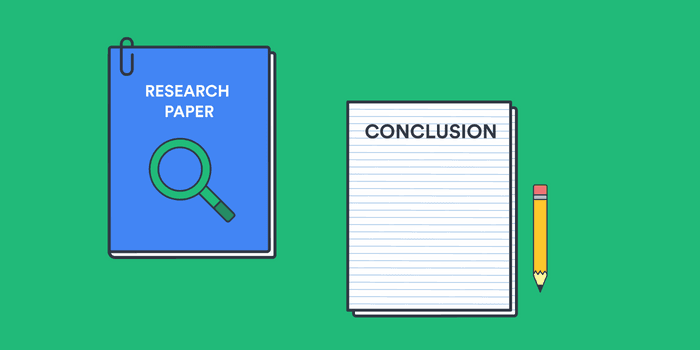
Research paper conclusions provide closure for your paper—but they can be difficult to write. What should you include? In this post, we discuss how to write a conclusion for a research paper.
What is a conclusion?
The conclusion to a research paper sums of your main argument and provides closure for your reader. It will return to your thesis statement and revisit the ways that you proved it.
The content and format of your conclusion will ultimately differ depending on the subject of your paper. Some fields have more specific expectations for what needs to be included.
You should always check your assignment’s guidelines or rubric to ensure that you understand what your instructor expects in a research paper conclusion.
How to write a conclusion
In this section, we break down the main parts of a conclusion and provide tips on how to approach each one.
The opening of a conclusion
The point of a conclusion’s opening statement is to transition from the main body of your paper to the concluding section. Some types of research papers include section headers that label each part of the paper. In these cases, your reader will be able to clearly see that you’re about to conclude.
In most other cases, begin your conclusion with a signal that indicates that you’re moving into the concluding section of your paper. For instance, you might start your conclusion by stating “in conclusion,” “to conclude,” or “in sum.”
What you can include in a conclusion
Although you shouldn’t include any new data or evidence in a conclusion, you can include suggestions for further research, insights about how your research could be applied in different contexts, or a course of action.
The bulk of the conclusion should synthesize—not summarize—the main points of your paper. If your introduction included historical information or an anecdote, return to that information now.
Your conclusion should also answer the “so what” question: why is this research relevant? Who should care about your argument and why?
The ending of a conclusion
Finally, you’ll want to end your conclusion with a closing statement that wraps up your concluding section (and your paper as a whole).
Tips for writing a conclusion
1. Don’t include new data or evidence
Your conclusion should provide closure to your paper, so introducing new information is not appropriate and will likely confuse your reader.
2. Don’t simply restate your thesis
You should never simply copy and paste your thesis statement into your conclusion. Instead, revisit your thesis in light of the evidence and analysis that you put forth in the main body of your paper.
3. Provide closure for your reader
A strong conclusion provides closure for the reader by synthesizing the main points of the paper and putting to rest any questions that the reader may have during the process of reading. The best way to test if your conclusion provides closure is to ask someone to read your paper.
4. Make suggestions for further research
While conclusions should not introduce new data or arguments, they can include suggestions for further research. A single research paper never covers everything—there are always possible new angles and approaches.
Next steps for a successful research paper
Once you’ve written your conclusion, you should review what you’ve written and make revisions, as needed. Then, double-check that you’ve cited all borrowed material and that your paper has a bibliography with accurate citations.
Use BibGuru’s citation generator to quickly create accurate citations for the books, articles, websites, and other sources that you used in your research paper.
Frequently Asked Questions about how to write a conclusion for a research paper
🫀 How do you write a good conclusion for a research paper?
The conclusion to a research paper sums of your main argument and provides closure for your reader. It will return to your thesis statement and revisit the ways that you proved it.
🩴 What are the 3 parts of a conclusion?
A conclusion contains an opening statement (often a restatement of the thesis), recommendations for further studies or applications, and a closing statement.
🧳 How do you start a conclusion paragraph?
Start by signaling to the reader that you are moving into the concluding section.
🐸 How long should a conclusion be?
The length of your conclusion will depend on the length of your paper. Most research paper conclusions will be around 1-2 paragraphs.
🫒 How should I end my conclusion?
End your conclusion with a closing statement that wraps up the paper and provides closure to your reader.


